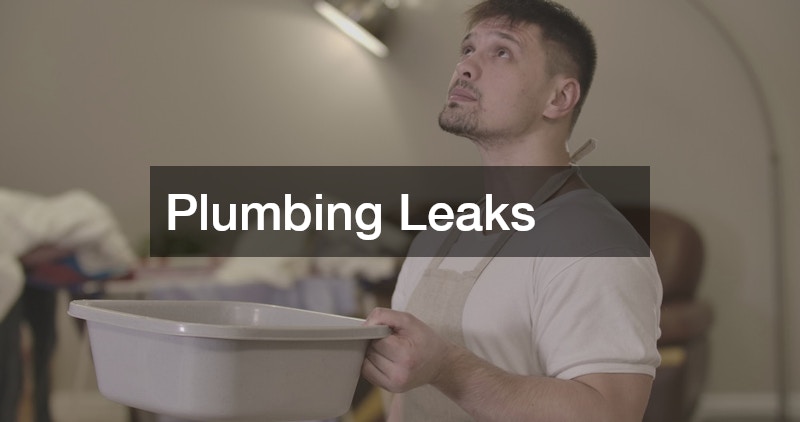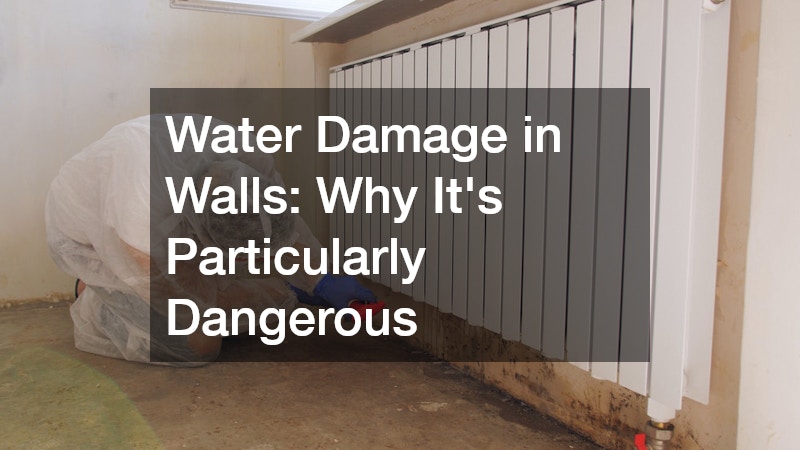
The Hidden Signs of Water Damage and What to Do About Them
Water damage is one of the sneakiest problems a homeowner can face. Unlike obvious flooding, hidden leaks silently infiltrate your walls, floors, and ceilings over weeks or months. By the time you notice stains, warping, or musty odors, the damage may already be extensive.
Understanding hidden water damage is crucial for homeowners. Early detection can save thousands in repairs, prevent mold growth, and protect your home’s structural integrity. This guide explores common causes, warning signs, practical solutions, preventative measures, and when to call professionals.
I. Common Causes of Hidden Water Damage
Water often finds its way into homes through sources that aren’t immediately visible. Recognizing these sources is the first step toward prevention.
Plumbing Leaks

Even small leaks in pipes behind walls or ceilings can lead to significant water damage over time. Moisture gradually saturates drywall, insulation, and wood, compromising structural integrity and creating an ideal environment for mold growth.
Homeowners can detect early signs by noticing damp patches, water pooling under sinks, or unusual sounds in their plumbing. Scheduling regular plumbing inspections ensures that minor leaks are caught early, preventing more serious damage later.
-
Common signs of plumbing leaks:
-
Persistent dripping or gurgling sounds in pipes
-
Discolored or damp walls and ceilings
-
Unexplained water pooling in hidden areas
-
Clogged Drains
Clogged drains are deceptively dangerous because they can cause slow backups that saturate hidden areas like under cabinets or behind floors. Small blockages may start with minor inconveniences like slow drainage or gurgling, but over time, water can seep into walls and flooring.
Prompt clogged drain repair prevents water from accumulating where it shouldn’t, reducing the risk of costly repairs. Preventative maintenance, including clearing hair, grease, and soap buildup, keeps drains flowing smoothly.
-
Tips for preventing clogged drains:
-
Use drain guards to catch hair and debris
-
Avoid pouring grease down kitchen sinks
-
Schedule periodic professional drain cleaning
-
Roof Leaks
The roof is your home’s first line of defense against water intrusion. Even minor damage—like a cracked shingle, damaged flashing, or clogged gutter—can allow water to travel into ceilings and walls before it becomes visible.
Professional roofing services are essential for detecting and repairing weak spots. Seasonal inspections, especially after heavy storms, help prevent leaks from escalating into major damage. Proper roof maintenance keeps your living spaces dry and your home structurally sound.
-
Warning signs of roof leaks:
-
Water stains on ceilings or walls
-
Sagging ceilings or rooflines
-
Damp attic insulation or dripping water during rain
-
Appliance Failures
Washing machines, dishwashers, water heaters, and refrigerators with water dispensers can develop leaks that remain unnoticed until significant damage occurs. Even small ruptures in hoses or failed valves can saturate cabinets, flooring, or walls over time.
Calling affordable plumbers to repair leaks promptly can prevent minor issues from turning into costly water damage emergencies. Regular appliance maintenance, including inspecting hoses and connections, reduces the risk of hidden leaks.
-
Common problem areas:
-
Water heater supply lines
-
Dishwasher hoses
-
Refrigerator ice maker connections
-
Foundation and Exterior Wall Cracks
Water can seep in through cracks in foundations or gaps in exterior walls, especially during heavy rain. These leaks often go unnoticed until they reach basements, crawl spaces, or interior walls. Over time, the moisture can damage drywall, insulation, and wood framing.
Preventative measures include sealing foundation cracks with waterproof caulk, maintaining proper grading around your home, and applying exterior sealants to protect walls and siding.
Water Intrusion from Basements or Crawl Spaces
Basements and crawl spaces are particularly vulnerable to hidden water damage because of poor drainage or high groundwater levels. Moisture in these areas can weaken structural beams, damage insulation, and encourage mold growth.
Installing sump pumps, dehumidifiers, and moisture barriers is an effective way to keep these areas dry. Routine inspections, particularly after heavy rainfall, help identify minor issues before they escalate.
II. Subtle Signs Your Home May Have Hidden Water Damage
Hidden water damage rarely floods a room overnight. Instead, it leaves small clues that alert homeowners to a bigger problem.
Visual Cues
Stains on walls or ceilings are one of the earliest indicators of hidden water problems. Yellow, brown, or discolored patches can signify leaks from pipes, appliances, or the roof. Bubbling paint, peeling wallpaper, or warped wood also points to moisture trapped behind surfaces.
-
Signs to watch for:
-
Water stains near ceilings, walls, or floors
-
Peeling paint or bubbling wallpaper
-
Warped wooden floors or trim
-
Calling a water damage company for evaluation ensures that hidden damage is properly assessed and repaired before it spreads.
Mold and Odors

Persistent musty or earthy smells often signal lingering moisture and possible mold growth. Mold can thrive in wall cavities, under floors, or in attics where humidity is high.
Professional mold remediation is often required to remove mold safely and prevent further contamination. Even small visible patches should never be ignored, as they can grow quickly and affect air quality.
Physical Changes
Moisture can cause floors to feel spongy, ceilings to sag, or drywall to soften. Doors and windows may swell, making them difficult to open or close. These subtle shifts often occur before more visible damage appears, making early detection critical.
-
Physical warning signs include:
-
Soft or uneven flooring
-
Sagging ceilings
-
Doors or windows sticking or swelling
-
Unexplained Water Bills
A sudden increase in water usage may indicate a hidden leak somewhere in your plumbing system. Regularly monitoring bills and addressing anomalies promptly can help catch water issues before they escalate.
Electrical Issues
Water intrusion can affect outlets, switches, and wiring, causing flickering lights or tripped breakers. Moisture in electrical systems poses serious safety risks, making early inspection crucial.
Pest Infestations
Damp areas attract pests such as termites, carpenter ants, and cockroaches. Infestations often indicate hidden water issues, which, if left unaddressed, can lead to further structural damage.
III. What to Do When You Discover Water Damage
Taking immediate action prevents further damage and reduces repair costs.
Stop the Source
Identify the source of water and stop it. Turn off the main water supply for plumbing leaks, cover roof leaks with tarps, and stop any leaking appliances. Quick action limits the spread of water and protects your home from additional harm.
Assess the Extent of Damage
Document all affected areas with photos or video. Check walls, floors, ceilings, basements, and hidden spaces. Evaluate whether the damage is localized or has spread to multiple areas. This documentation is helpful for insurance claims and professional repair planning.
Call the Right Professionals
Water damage can be more extensive than it appears. Water damage restoration specialists use professional equipment to dry, disinfect, and restore affected areas. Plumbers can locate hidden leaks efficiently and repair them before they escalate. Early professional intervention is often cheaper and safer than DIY fixes.
Temporary Measures
While waiting for professional help, use fans and dehumidifiers to dry minor leaks. Avoid running HVAC systems that could spread mold spores. Quick temporary measures help reduce damage while preparing for a full restoration.
IV. Water Damage in Walls: Why It’s Particularly Dangerous

Hidden water inside walls is especially concerning because it’s completely out of sight, yet it can silently compromise your home. Water trapped in wall cavities can weaken drywall, rot wooden studs, and damage insulation. Over time, this hidden moisture can spread to adjoining rooms or floors without any obvious signs.
One of the trickiest aspects of water damage in walls is that it often doesn’t reveal itself until the damage is advanced. Early indicators include a musty odor, small damp patches, or bubbling paint. Ignoring these signs can lead to costly repairs, mold infestations, and even structural instability.
-
Tips for detecting water in walls:
-
Look for slight discoloration or sagging paint
-
Monitor for musty odors, especially in closets or near baseboards
-
Check electrical outlets for unusual sparks or tripping breakers
-
V. Seasonal Water Hazards and How to Prepare
Water damage risk often changes with the seasons, and homeowners need to adapt accordingly. In the rainy season, heavy storms can cause roof leaks, foundation seepage, and clogged gutters to become major problems. In colder months, frozen or burst pipes can lead to extensive hidden water damage.
Preparation starts with plumbing inspection and roof evaluations before peak seasons. Gutters should be cleaned regularly, and downspouts directed away from the foundation. Installing insulation around exterior pipes helps prevent freezing, while checking appliances ensures hoses and connections remain leak-free. Seasonal awareness is key because minor issues that go unnoticed in one season can escalate into major damage the next.
-
Seasonal preparation checklist:
-
Spring: Clean gutters, check for roof damage, inspect basement for leaks
-
Summer: Trim trees, test irrigation systems, check appliance hoses
-
Fall: Inspect and seal exterior cracks, prepare heating systems
-
Winter: Insulate pipes, monitor for ice dams, check for indoor condensation
-
VI. Prevention: Protecting Your Home from Future Water Damage

Preventing water damage requires consistent attention and routine maintenance.
Regular Inspections
Schedule annual plumbing inspections to detect minor leaks, worn-out hoses, or corroded pipes before they escalate. A reliable roofing company can inspect shingles, flashing, and gutters to prevent roof leaks before storms.
Maintain Gutters and Drains
Clean gutters and downspouts twice a year. Address clogs promptly to prevent water from pooling around the foundation. Routine clogged drain repair is key to keeping water flowing away from your home.
Upgrade Vulnerable Systems
Replace aging supply lines, shut-off valves, and appliances. Consider installing leak sensors near high-risk areas like water heaters, sinks, and washing machines.
Landscaping and Exterior Care
Ensure proper grading so water flows away from the foundation. Trim trees and shrubs to prevent damage to roofs and gutters. Apply sealants to siding, windows, and foundations to protect against water infiltration.
Seasonal Preparation
Inspect roofs for ice dams in winter and remove snow as necessary. Drain outdoor faucets and hoses to prevent frozen pipe bursts. Check basements and crawl spaces during rainy seasons to catch hidden leaks early.
VII. Creating a Water Damage Monitoring Plan
Homeowners can minimize risk by creating a monitoring routine. Install water sensors and smart alerts near appliances, water heaters, and basements. Perform monthly or quarterly inspections of bathrooms, kitchens, and crawl spaces. Keep a log of plumbing inspections, roof checks, and maintenance tasks. Using a moisture meter for walls and floors can catch leaks that are invisible to the naked eye.
VIII. When to Call a Professional vs. DIY
Minor leaks, faucet washer replacements, and simple drain cleaning can often be handled by homeowners. However, hidden pipe leaks, roof damage, or large-scale water intrusion require professional help. Hiring plumbing companies, a roofing company, or water damage restoration specialists ensures thorough repair and prevents recurring issues.
IX. Choosing the Right Professionals
Even with careful monitoring, some water damage situations require professional intervention. Selecting the right experts ensures repairs are thorough and prevent recurring problems.
For plumbing issues, certified plumbers can locate hidden leaks, repair pipe damage, and recommend preventive solutions. For roof-related problems, a reliable roofers ensures shingles, flashing, and gutters are in good condition to prevent future leaks. When water has already infiltrated walls, floors, or ceilings, a water damage restoration specialist is essential. These professionals use industrial drying equipment, disinfectants, and mold prevention techniques to fully restore affected areas.
Homeowners should ask about certifications, insurance, and previous work. Reading reviews, getting multiple estimates, and understanding warranties ensures competent and trustworthy service. Investing in quality professional help now can prevent thousands in future repair costs.
X. Financial Considerations and Insurance for Water Damage
Water damage can be expensive, and homeowners should be proactive in understanding the financial impact and insurance coverage. Even small leaks can escalate into costly repairs if left unaddressed. Hiring professionals may seem like a significant upfront cost, but it often prevents much higher expenses down the line.
Homeowners should also review their insurance policies. Many standard homeowners’ insurance plans cover sudden water damage from burst pipes or roof leaks, but gradual leaks or maintenance-related issues may not be included. Keeping documentation from plumbing inspections, receipts from repairs, and photos of damage can strengthen insurance claims.
-
Tips for managing financial risks:
-
Schedule regular inspections to prevent costly repairs
-
Keep receipts and photos for insurance claims
-
Consider setting aside an emergency fund for unexpected water damage
-
Compare quotes from reputable professionals to ensure cost-effective solutions
-
Understanding the financial side of water damage helps homeowners make informed decisions, prioritize preventive maintenance, and ensure that necessary repairs are handled promptly without breaking the bank.
Final Thoughts
Hidden water damage can silently compromise your home’s structure, health, and value. Recognizing subtle signs, taking immediate action, and combining routine inspections with preventive care allows homeowners to catch problems before they escalate. With vigilance, proper maintenance, and timely professional intervention, your home stays safe, dry, and structurally sound.

